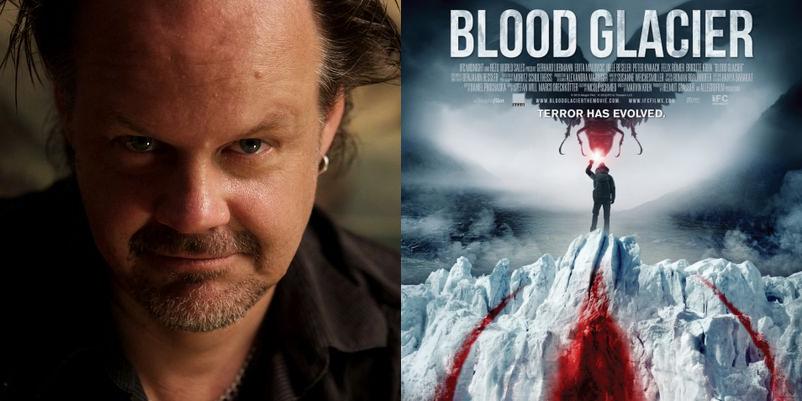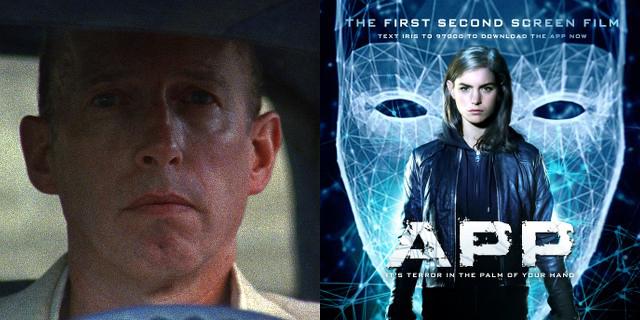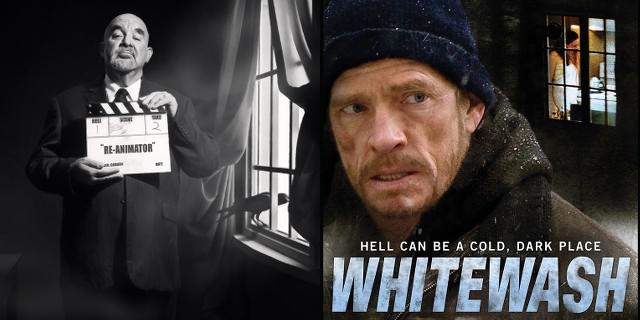Not too long ago, The Talkhouse invited me to write about a new horror film that was being released into theaters and so I set aside some time to watch the screener. I didn’t get very far into the movie before turning it off and asking my host if I could choose another film to write about. I knew from the get-go that I wasn’t going to love the film and it lived up to my greatest fears. It embodied everything that I dread about the horror genre, a genre I have been involved with for most of my life: it was horror for horror’s sake, designed to titillate and not to scare, designed to entertain but not to shock, fetishizing gore without any insight, serving up thrills with no moral perspective, and, maybe worst of all, had a glossy “movie logic” that didn’t track emotionally to this viewer. The sequence I had watched was put together with complete confidence and competence, there was no question about that. But every beat played as a cliché and had that kind of familiarity that makes movies seem dead.
I opted for another movie from the roster of titles on offer. And I found just the film for me: Blood Glacier. I’d heard about Blood Glacier from a film festival catalogue and seen it compared to Carpenter’s The Thing and tangentially to my own film The Last Winter. Most intriguingly, it was a horror film — a creature film — about global warming, a real horror we all collectively face.
Blood Glacier is a film made in Austria and unfortunately the first thing that has to be said about it is that it has been dubbed into English for its current release. Quite honestly, I feel ill-equipped to even critique Blood Glacier based on this iteration because a movie like this depends on a certain mood and feeling of dread and the presentation of the film this way undermined the emotional impact and skewed the tone nearer to unintended parody at times.
It is interesting to contemplate the financial repercussions of releasing a creature feature in its native language and from that perspective the decision to dub the film may have been the right choice. But it brings to mind recent foreign language genre films like Troll Hunter, which seemed to garner attention in its U.S. release, and The Host, a wonderful monster movie that worked in its native tongue. In fact, it seems more the exception than the rule that a film gets dubbed into English. In the case of Blood Glacier, it has a negative impact.
As a result of the dubbing, I viewed the film as if through a filter, wondering if a certain unconvincing sequence was the result of the detached performance, bad lip-syncing or the filmmaking itself. I always remember thinking as a kid that foreign films seemed smart because the subtitles were so simple while the performances in the native tongue seemed rich and mysterious. The combination of simple translation and nuanced performance cast a spell and deepened the experience. In the case of Blood Glacier, it is worth acknowledging that there is a lot of dialogue, and several passages of scientific explanation must have made the choice to subtitle seem daunting. And no doubt it might have affected positioning on VOD platforms.
Despite all this working to undermine the experience, I found Blood Glacier to be oddly affecting. First of all, in an opening statement, it declares: “In 2014 the last skeptics fall silent. The climate disaster is worse than ever imagined.” This sentiment already puts me on edge because I am predisposed to believe this is the case. The film has an emotional and pseudo-scientific understanding of the threats that face humanity through climate change. The location itself has a grey, grim atmosphere: snowless, treeless mountains, neither majestic nor particularly beautiful, stretch before us, shrouded in raging clouds. The glaciers that remain are melting and scarred and covered in black soot like snow banks on a city street. Compare this to the vast blue blankets of endless snow in The Thing or the white vistas in The Last Winter and Blood Glacier wins hands down as the more depressing location: even the apocalypse is drab in this film.
Shot with a nervous hand-held widescreen camera, the film is handsomely framed at times and flows credibly. It is the opposite of the film I rejected earlier: it is wholly engaged with character and grounded in real-world concerns that literally mutate into an increasingly horrific fantasy.
And now to the actual plot: Climate scientists in a remote station encounter a glacier that seems to be bleeding organic material, making the snow look blood red. (It’s an effect that in the movie looks primarily like an unsettling computer-generated image in the wide shots and spray-painted ice in closeups.) From this blood red glacier increasingly bizarre and harrowing creatures begin to emerge, first a badly afflicted fox whose transmutations cause the dubbed dialogue to repeat over and over, “Your fox, your fox,” for much of the first 20 minutes of the film. But concerns about the fox soon give way to panic over other horrid creatures, each some sort of hybrid between mammal and insect, bird and insect, or sometimes just some creepy insect, or swarm of insects. While it will be compared to The Thing, it feels more like The Mist, where an increasingly freakish barrage of creatures assaults a captive group of terrified victims.
What sets Blood Glacier apart from The Mist and The Thing is that the pseudo-scientific explanation for the mayhem is based on the very real things that are changing on the planet due to climate change. At one point, a character points to a bare rocky mountain and says, “I used to sled there as a boy when there was snow on that mountain.” The movie doesn’t hand wring about climate change, doesn’t preach, but climate change is reality in the film. It has caused the horrifying mutations that are occurring, and so every monster, every atrocity that occurs (goat-beetle, anyone?) is because of humanity, is brought on by our own complicity. In The Thing, we can blame the aliens, in The Mist we can blame the military but in Blood Glacier, it is ourselves that have brought on this horror.
This is a low-budget film. The creatures are not entirely convincing. In The Thing, the artistry in the practical effects was part of the spectacle. There was horrific beauty to the design of the creature in all its incarnations. Years later, The Mist would offer a combination of puppets and digital effects to create another artful and powerfully rendered nightmare. Blood Glacier offers bargain-basement creatures that seem to be taxidermy stuck on a stick shoved menacingly through doors while being photographed with a shaky cam. And yet they are menacing because they represent nature perverted in the worst way.
If you know anything about climate change, you know that all the great species will die off in the coming decades and we will be left to share the planet with cockroaches and jellyfish and beetles that devour forests – all the species that give us the willies. That’s what the creatures in Blood Glacier evoke: just the worst of everything to come. They are grey and mangy and tattered; they claw, burst, cling, scuttle, burrow and puncture. They are awful, the stuff of bad dreams. In a bizarre twist at the end, the couple in whose romance we are invested find some meaning in adopting one of the creatures. I’ll leave the details a bit vague, but the pseudo-happy ending seems to say we will live with the nightmare creatures we have wrought and find new meaning, and the human spirit will go on. Sheesh. No thanks. A few of the characters might fly off in a ‘copter like the survivors of a Jurassic Park flick, but the raging mutations of nature seethe on below, brought on by our recklessness.
Blood Glacier is a B-movie for sure, and it wears the mantle proudly. It succeeds as a horror movie by remaining earnest and depicting a terrifying reality that is barely far-fetched in this rapidly destabilizing world we have created. There is a palpable feeling of dread here. For my money, this is real horror, watching people coping in a world gone bad. Kudos to director Marvin Kren and writer Benjamin Hessler for telling this tale. Would that it would serve as a warning to us all.
(Full disclosure: Larry Fessenden and Marvin Kren both contributed segments to the upcoming film ABCs of Death 2, however do not know each other.)






